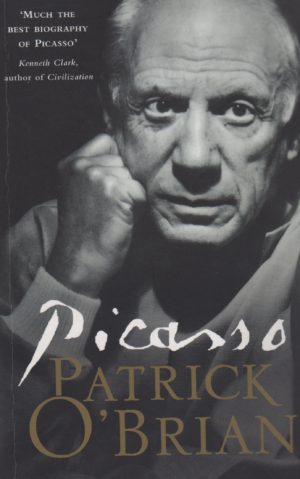
Newspaper men eating candy
Had to be held down by big police
But someday every thing’s gonna be different
When I paint that masterpiece
(Bob Dylan)
The point of O’ Brian’s massive and well-documented biography is not to cast Pablo Picasso as a great man. It seems the author, who is known primarily as the creator of the “Master and Commander” series of novels about the British Navy, did not set out to portray Picasso as a saint (or a complete sinner for that matter), but sought only to remind us of the man’s genius. In this task, O’ Brian succeeded. Fully and completely.
I bought this biography at the Picasso Museum in Barcelona and was pleased to find that, towards the end of the book, the author discusses how that storied repository of Picassos came to be. Seems that the artist did not want the museum, as was first proposed, to be based in Màlaga, a location Picasso claimed “had no connection to me or my art”, but was happy to have his friend and confidant, Jaime Sabartés work with city officials in Barcelona to make the museum a reality. During their decades long friendship and relationship, Picasso paid Sabartés poorly for his work as his right-hand-man, but bestowed upon his fellow artist (Sabartés was a painter, poet, and writer of note before agreeing to become Picasso’s personal secretary and administrator) hundreds of pieces of art as additional compensation. All of Sabartés’s Picassos were given by Sabartés to the museum, a generous gift with a value (today) in the tens of millions of dollars.
O’ Brian deals with Picasso’s two marriages and various flirtations and adulteries, one of which produced two children, and the financial and relationship issues all his dalliances caused both his children and his grandchildren. He tackles such issues fairly and evenhandedly, all the while ensuring that the reader doesn’t miss the main point of the book: While Picasso could be a sonofabitch to family and friends, he was genuinely kind and generous and, above all, the 20th century’s most honored, prolific, and controversial artist. Pablo Picasso continued to be innovative and productive right up until his death at the age of 91. That alone is a significant achievement in a man’s life!
My only criticism of the book is that O’ Brian spends a great deal of time describing the masterpieces painted, sculpted, drawn, or created by Picasso. This leads the overall narrative to bog down and lose some of its steam. One wonders why illustrations of the great man’s works were not included. One would think that, for example, that the Barcelona Museum, which holds many early Picassos (gifted to the museum by the artist himself) would’ve been pleased to have such a positive book about its benefactor available to the world; especially given that the two biographies written by Picasso’s lovers during his life portray him as a devil and an antagonist. Not having visuals to coincide with the narrative descriptions of Pablo Picasso’s work is a major flaw in this book.
That having been said, I still agree with the front blurb by writer Kenneth Clark, who proclaimed O’ Brian’s book to be “Much the best biography of Picasso.” Why? While the author was a friend of the artist’s, a position that gave him direct witness to Picasso’s later life, O’ Brian is careful not to elegize or eulogize the man with grandiosity. He simply makes the point that Pablo Picasso was a flawed man who happened to be the most important and most prolific genius of the 20th century art world.
4 stars out of 5. A worthy effort indeed!
Peace. Mark



Have you read John Richardson’s three volume biography of Picasso ?
I have not. I’ll take a look!
MM